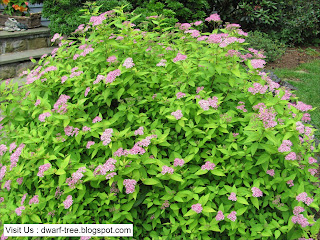1- What to Prune
Prune spring-blooming dwarf spirea shrubs back immediately after the flowering display ends in mid- or late spring. Cut back all branch tips to an even, lower height across the entire plant. The shrub may be cut back in height as much as three-quarters and it will still rejuvenate. Summer- and fall-blooming spirea shrubs may be cut back severely in very late winter to main branch stubs that are 4 to 6 inches tall.2- Types
Knowing when the dwarf spirea blooms provides insight as to when to prune. Spring-flowering spirea bloom from buds on branches that matured the previous fall. These branches are often referred to as "old wood" or year-old branches. These shrubs should be pruned right after the blooms are finished. Conversely, spirea shrubs that bloom in summer and intermittently into fall up until frost produce flower buds on current year's growth -- those twigs that grew since spring. These shrubs should be pruned in very late winter just before the plants leave dormancy.3- Landscape Use
Dwarf spirea shrubs may be used as a low edging or hedge in gardens or as small-sized accent flowering shrubs. If flowering is not important to you or the integrity of the garden design, all spirea shrubs -- regardless of season of bloom -- may be pruned back in late winter each year to control size. New growth occurs in response, with lush foliage. If the dwarf spirea shrubs need to display flowers each year to meet your aesthetic needs, it's vital to prune at the correct time to ensure you are not removing flower buds.

0 comments:
Post a Comment